| Introduction | The Early Days | High Society |
| Church & State | Jaka's Story | Melmoth |
| Mothers & Daughters | Guys | Misogyny |
| Cerebus Links | My Other Pages | Other Interesting Pages |
Cerebus isn't always my favorite comic, although it has usually been near the top all the years I've been reading it. Its quality has remained consistent, but the field around it has grown. While there weren't more than half a dozen comics as good as Cerebus in 1980, there are dozens now - despite the fact that Cerebus is much better, too. On the other hand, there have been many comics in the past that were better than Cerebus for a time, but most of them have either declined or ceased publishing. No regularly published comic can touch its consistent level of quality maintained over 20 years. Of the few comics published in the late 70s that were as good or better than the early Cerebus, only one is still being published, and The Uncanny X-Men is a pale shadow of its former self. (Yes, I know Elfquest is being published today, but it's "again" rather than "still" - there was a long period where only the reprint books were being published.) Meanwhile, Cerebus and the rest of the field have grown to the point that considering a Marvel superhero comic one of the best comics around seems today almost silly.
Dave Sim likes to say that a graphic novel is a minimum of 500 pages long (although one of his own novels, Jaka's Story clocks in at only 480). He archly calls his 240-page book Melmoth - longer than all but a handful of the books published as "graphic novels" - a short story. While not as strict as Sim (I think Jaka's Story is definitely a novel, and probably Melmoth is, too), I would agree that the vast majority of works called "graphic novels" are too short to really deserve the term.
Maus is a graphic novel, if you allow an autobiographical biography of one's father to be called a "novel." (Since Capote's In Cold Blood and Mailer's The Executioner's Song, among others, have been called, "non-fiction novels," I think we can allow the term.) Watchmen and From Hell are long enough. There are a few others. But of the ten "graphic novels" that make up the Sandman collection, for instance, only one is of respectable length for a novel. The entire run of Sandman may be seen as a multi-volume graphic novel, but we really need a new name for the volumes themselves, and for similar works. Elsewhere in this webspace, I suggest calling them comic books.
What Sim is doing is not just redefining what it takes to call something a graphic novel, however. Like Sandman, the entire series tells a single story - or will, when it is finished. 6,000 pages, 300 issues, 24 years. All devoted to an anthropomorphic aardvark named Cerebus.
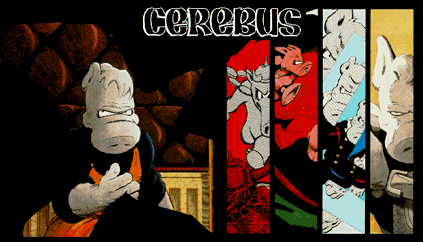
Cerebus is not a hero, though he sometimes acts in heroic ways. He sometimes acts in villainous ways, as well. In fact, he's not a likable character. He is greedy, selfish, ill-tempered and often self-defeating. It's obvious he doesn't really understand a lot of what is happening around him. And yet, he has a strange charisma, an ability to charm that draws in people who should know better. ''I think everybody knows someone like Cerebus,'' said Sim in an interview I did with him, ''someone who you wish wasn't your friend, who makes you so mad you swear you'll never speak to him again, and then he does something unexpectedly nice and you can't help liking him.''
Sim has said Cerebus will die in issue 300, to be published in 2004. People laughed at him when he first said that, because at the time he'd published about 12 bi-monthly issues, and only such stalwarts as Superman and Batman had reached 300 issues. Even the keystone Marvel books like Amazing Spider-Man hadn't reached 200 yet, much less 300.
As of the most recent revision of this page (July 20, 1998), Sim has published 232 issues. Every month since issue #14, a Cerebus comic magazine has arrived. Well, more or less. They weren't always on time - chronic lateness put him so far behind by the end of Church & State that the September 1988 issue, #114, the beginning of Jaka's Story, came out in January the following year. But Sim and his background artist, Gerhard, forced themselves to ship the two-year Jaka's Story run at a rate of an issue every three weeks, at the end of which he was current. He's never been more than a week or so late since.
The funny thing is, when he hit #200, everyone said "Well, he'll make it for sure, now." Like 100 issues was a cakewalk. The only writer/artist or writer/artist team who ever did 100 issues of a single title before Dave Sim and Gerhard was Stan Lee and Jack Kirby on Fantastic Four. They did 104 issues. Sim has doubled that, and he still has to almost match it again to reach the end.
Still, it seems unlikely that anything short of disaster could stop him now. The current collapse of the comics shop market has seen his circulation shrink to little more than a fourth of the peak it reached around issue #100, but it's still five times the print run for the first issue - and much more than most small-press or self-published comics The collected novels, affectionately called "phonebooks" by his fans to distinguish them from the much skimpier "graphic novels" his competitors put out, sell better than the comic magazine itself. And he has weathered market collapses before.
In the mid-'80s, the incredible success of the Teenage Mutant Ninja Turtles led to an explosion of black-and-white, independently produced comics, most of which were amateurish and stupid. Comic shop owners, being forced by the current distribution system to order non-returnable comics blindly, were all afraid they'd miss out on "the next Turtles," and ordered a few copies each of dozens, even hundreds of titles that were so miserably done they were impossible to sell. In rebellion, many of them decided to never again order a black-and-white comic, or never again order anything from a company they'd never heard of, or both. The black-and-white market dried up overnight, and even established comics like Cerebus felt the pinch. In fact, the Turtles themselves dwindled to almost nothing and eventually quit publishing soon after issue # 50 - although the creators continued to make money from licensing them to TV and toys. To this day, it's hard to get many shop owners to even consider buying a new, unproven black-and-white comic.

But by that time, Cerebus was an established success, and while the implosion hurt Sim's magazine circulation, he had by that time begun collecting the comics in the massive trade paperbacks known as "phonebooks." The novel High Society was the first - the earlier issues had previously been collected in smaller volumes called "Swords of Cerebus" at four issues each. The success of High Society led Sim to discontinue the "Swords" volumes and print another big phonebook with all the first 25 issues. What Sim learned with High Society was that the sales were not going only to fans of the comic who wanted an easier-to-read volume with the entire novel in it, or new fans wanting to catch up on the storyline. People who had never read Cerebus were picking up High Society. It has since gone into several printings, and far outsold the magazine. The same has held true for all the phonebooks since.
Sim has produced so far 11 volumes of Cerebus' story. The early ones are big, thick tomes of 500 or 600 pages. Sim's later collections are slimmer and less costly, but unfortunately not as good an introduction to the character and story. If you want to sample Cerebus to see if it's for you, I'd suggest starting with High Society or Jaka's Story - although in the latter the overall storyline comes crashing in (literally) about two-thirds of the way through, which is quite confusing, but by then either you're hooked or not. Church & State, published in two big volumes totalling over 1200 pages, comes pretty close to making a single, stand-alone story, and it explains most of the necessary background early on.
If you like Cerebus, of course, you'll have to read the whole thing, so you might think it's best to start from the beginning. This is more or less true, but please have patience. It took Sim a couple of years to really develop his storytelling and artistic style. The first few issues are painfully rough, but visibly improve as you go until he reaches a level of consistent artistic excellence about halfway through the first volume. His storytelling abilities and characterization, his experiments with the medium and what it's capable of, continue to this day. It was not until issue #65 (about halfway through the first volume of Church & State) that he was joined by Gerhard, whose magnificent backgrounds have lifted the art in Cerebus to a whole new level.
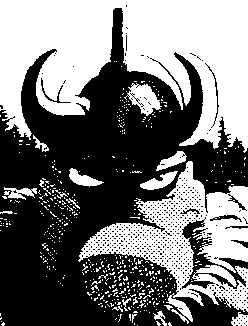
So, what is Cerebus about?
Oh, about three feet tall. (Sorry, I couldn't resist.)
The first volume of the collected Cerebus is titled simply Cerebus, but many fans refer to it as Cerebus the Barbarian or even simply "the Barbarian book," to differentiate it from the monthly magazine or the character himself. This first volume collects the first 25 issues of the magazine (bimonthly the first 13 issues, so this represents about 3 years). Cerebus is a bad-tempered, greedy misanthrope who just happens to be an aardvark. He's also, in the beginning, a barbarian sword-for hire in a primitive time (supposedly our world 6,000 years ago). Howard the Duck meets Conan the Barbarian. Cerebus romps through mostly single-issue stories that are primarily humorous.
In issue three, we meet Red Sophia, a take-off on Red Sonja, who appeared in the last Conan comic drawn by Barry Smith (before he added the Windsor), and in her own series drawn by Frank Thorne. Sophia seems to be a one-note joke, spoofing the warrior woman seeking the man good enough to best her in battle. She appears only once more in this book and not at all in the next, but in fact becomes one of the three women who are key factors in Cerebus' life, or at least the first half of the series.
In issue four, we meet Elrod the Albino, a recurring character who is visually a spoof of Michael Moorcock's Elric as he was drawn by Smith in Marvel's Conan comic. Verbally, he's, I say, he's a dead ringer for Foghorn Leghorn, the cartoon rooster that is (and Dave Sim is one of the few people who can tell you that Leghorn is, in turn, a take-off on the radio character Senator Claghorn). Elrod became one of the most popular recurring characters, showing up again as early as issue seven.
In issue six, Jaka, Cerebus' "lost love" and the second of the three key women in his life, makes her first appearance. In an early two-parter, Cerebus meets The Cockroach, a parody of Batman. He shows up again as Captain Cockroach, and becomes a running gag parodying various superheroes. In the Palnu Trilogy, issues 14-16, Cerebus meets Lord Julius, a tribute to Groucho Marx. As the series matured, Sim's storylines stretched in both length and grasp. The book ends with a three-part tribute to Clint Eastwood's "The Beguiling."
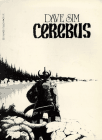 | Order Cerebus (The Barbarian) from amazon.com |
|---|
Links to amazon.com provided as a service to those whose local comic book store can't or won't stock or order this and other graphic novels. Those few stores that DO support comic BOOKS (as opposed to flimsy magazines - see my rant on the subject) should be encouraged by giving them your patronage. Thank you.

The book begins with Cerebus still essentially the barbarian of the early days despite his brush with civilization during "The Palnu Trilogy," working as "Kitchen Staff Supervisor" for Lord Julius (he was actually Director of Security Forces, but that title had been given to the Secretary of the Navy because, as Lord Julius says early on "When you're running a bureaucracy, the best way to safeguard your job is to make sure you're the only one who knows how the whole thing works"). He crashes into the swank Regency Hotel in Iest, the most advanced city-state of his day and demands service, trying to start a fight. Instead, he's treated like royalty and people line up to give him money.
It turns out that his past ties to Lord Julius have people convinced he can somehow help them thread the arcane bureaucratic nonsense anyone trying to do business with Palnu runs into. He's about to use this fact to make a great deal of money when his plan is spoiled by the Moon Roach, who drops a large stone moon on the Pope's nephew, making the contract Cerebus had signed with him worthless, thanks to the Inquisition. OK, it doesn't make sense. You try condensing the first third of a 500-page novel into a few sentences. It all makes sense in the book. Sort of. I'll admit you don't really realize what the Inquisition is all about until much later.
Moon Roach turns out to be controlled by Astoria, a mysterious woman who is the third major female character in Cerebus' life. She offers to bail him out of trouble and make him "a very wealthy aardvark" using her connections and knowledge of Iestian politics. When Lord Julius proposes to replace him as "Ranking Diplomatic Representative" with Elrod, we have wonderful parody of a political convention that more closely resembles a comics or sci-fi convention. But a chance remark by a figure out of Cerebus' past leads Astoria to realize that "Ranking Diplomatic Representative" is small potatoes - Cerebus should run for Prime Minister.
The campaign itself is a hilarious satire of politics, deal-making and the "free press." The printing press is invented (Sim believes everything is cyclical, things are invented then forgotten when a civilization falls), and each side puts out "one-sheets" which resemble the "sound bites" of modern politics. Sim certainly seems to take a jaundiced view of democracy and the electoral process. A down-to-earth farmer, not perhaps Sim's mouthpiece but on the whole a sensible and honest character, says of increased participation in elections "it's like watchin' gangrene spread."
The book ends with "Cerebus' Six Crises" as Cerebus finds that having power can be even trickier than getting it.
 | Order High Society from amazon.com |
|---|
Links to amazon.com provided as a service to those whose local comic book store can't or won't stock or order this and other graphic novels. Those few stores that DO support comic BOOKS (as opposed to flimsy magazines - see my rant on the subject) should be encouraged by giving them your patronage. Thank you.
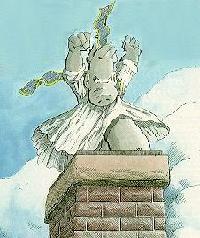
It starts with Cerebus in a bar, surrounded by barbarians. But he is not the same character he was before. He's writing a book, "On Governing," about his experiences as Prime Minister of Iest. He visits The Countess, Michelle, where what might become a tender moment is interrupted by "Uncle Artemis" - the roach character again, now going by the name of Wolveroach. Frank Miller had just done one of the first "mini-series" - certainly the first wildly successful one - of four issues based on Marvel's Wolverine character, and so Sim did "The Secret Origin of the Wolveroach," a three-part mini-series within the series that featured the character on the cover each month but hardly at all inside. Marvel was not amused, and their lawyers sent him a letter, which he printed on the letters page. Since neither the covers nor the letters page is in the collected version, and since Wolveroach comes and goes early on in the 600+ page first volume of Church & State, such a reaction seems incredible to a reader of the book, but even Sim later admitted that all Marvel needed was to find some kids who bought the books on the basis of the covers thinking Wolverine was inside to make a case.
Cerebus leaves Michelle and wakes up in a hotel room hung over. In the bed with him is Red Sophia. They're married.
The whole thing turns out to be a plot by Adam Weisshaupt, who is named and patterned after the founder of the Illuminati who resembled George Washington closely enough that there are some who claim that he replaced him and became our first President. Weisshaupt showed up in the first book with a scheme to unite the city-states of the Feldwar Valley into the United Feldwar States, and this time he's brought his scheme to fruition, with himself as President over all the various Prime Ministers. He wants Cerebus to be his puppet in Iest. Cerebus isn't interested, but Weisshaupt drugged him and got him to marry Sophia, and had a law passed making desertion of one's spouse a capital offense. Only the President can dissolve a marriage, so if Cerebus wants out of his marriage to Sophia, he has to play along with Weisshaupt's charade first.
One night when Weisshaupt is feeling magnanimous, he shows Cerebus how he got all the Feldwar states together. Magic. We'd call it technology. ("Whose magic?" Cerebus asks. "I paid for it," says Weisshaupt, "My magic.") On top of the Regency is mounted a cannon. He shoots it to demonstrate its power. Boom.
Everything's going swimmingly for Weisshaupt until Cerebus becomes Pope, whereupon he realizes he doesn't need Weisshaupt anymore, moves to a little hotel away from the Upper City where Weisshaupt and his cronies are, and announces that the world will end in 14 days unless everyone gives him all their gold.
The next few days go by quickly enough reading the whole thing as a novel. A lot happens in those few days. When it was being published as a 20-pages-a-month magazine, it was excruciating (all the more so when the wait was five or six weeks instead of four). Sometimes the fictional technique of collapsing time is entirely absent, and an entire comics magazine covered about the same 20 minutes or so it took to read it. It took several issues for each day. It took three years to finish the rest of the novel.
About the time Cerebus became Pope, Gerhard joined Dave Sim in doing the artwork for the comic, in a collaboration perhaps unique in the industry. Typically, a "comic book" (i.e., magazine) has a penciler and an inker, and the former is usually thought of as the "main" artist. Despite the fact that Sim has been nominated for "best penciler" awards and Gerhard (he uses only the one name) for "best inker," they don't work that way. Sim pencils and inks all the figures and lettering (word balloons, sound effects), then hands the pages to Gerhard, who pencils and inks all the backgrounds. And stunning backgrounds they are.
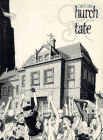 | Order Church & State (I) from amazon.com |
|---|
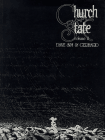 | Order Church & State (II) from amazon.com |
|---|
Links to amazon.com provided as a service to those whose local comic book store can't or won't stock or order this and other graphic novels. Those few stores that DO support comic BOOKS (as opposed to flimsy magazines - see my rant on the subject) should be encouraged by giving them your patronage. Thank you.
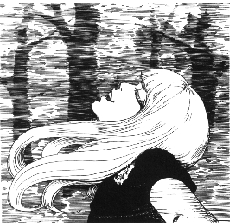
Cerebus becomes a houseguest of Jaka, the one true love of his life, who long ago gave up on him and is now married to Rick. Rick is a guileless and hopelessly na�ve soul. When Cerebus says, "Listen, kid. Cerebus is in love with your wife!" Rick answers, "I know. Isn't she great?"
The first two-thirds of this novel alternates between the quotidian, even boring events of the daily lives of Cerebus, Rick, Jaka, their landlord (and Jaka's employer) Pud, and Oscar, a character based on Oscar Wilde, and the story of Jaka's childhood. The latter is presented as illustrated text, like a children's book, a technique Sim would return to in Reads.
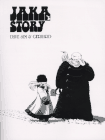 | Order Jaka's Story from amazon.com |
|---|
Links to amazon.com provided as a service to those whose local comic book store can't or won't stock or order this and other graphic novels. Those few stores that DO support comic BOOKS (as opposed to flimsy magazines - see my rant on the subject) should be encouraged by giving them your patronage. Thank you.

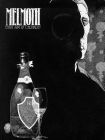 | Order Melmoth from amazon.com |
|---|
Links to amazon.com provided as a service to those whose local comic book store can't or won't stock or order this and other graphic novels. Those few stores that DO support comic BOOKS (as opposed to flimsy magazines - see my rant on the subject) should be encouraged by giving them your patronage. Thank you.
| Flight | Women | Reads | Minds |
(I realize I haven't mentioned Cirin or Cirinism or Kevillism, despite the fact that these were first mentioned all the way back in the first book and are vitally important to the overall storyline. That's for two reasons: I'm trying not to put too many spoilers in here, and for the most part the Cirinist/Kevillist debate is pretty much in the background until the next book.)
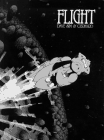 | Order Flight from amazon.com |
|---|
Links to amazon.com provided as a service to those whose local comic book store can't or won't stock or order this and other graphic novels. Those few stores that DO support comic BOOKS (as opposed to flimsy magazines - see my rant on the subject) should be encouraged by giving them your patronage. Thank you.
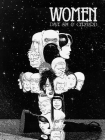 | Order Women from amazon.com |
|---|
Links to amazon.com provided as a service to those whose local comic book store can't or won't stock or order this and other graphic novels. Those few stores that DO support comic BOOKS (as opposed to flimsy magazines - see my rant on the subject) should be encouraged by giving them your patronage. Thank you.
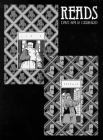 | Order Reads from amazon.com |
|---|
Links to amazon.com provided as a service to those whose local comic book store can't or won't stock or order this and other graphic novels. Those few stores that DO support comic BOOKS (as opposed to flimsy magazines - see my rant on the subject) should be encouraged by giving them your patronage. Thank you.
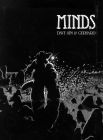 | Order Minds from amazon.com |
|---|
Links to amazon.com provided as a service to those whose local comic book store can't or won't stock or order this and other graphic novels. Those few stores that DO support comic BOOKS (as opposed to flimsy magazines - see my rant on the subject) should be encouraged by giving them your patronage. Thank you.
(Actually, having reread it in novel form since writing the above, I realize there's quite a bit more to it, and I'll be rewriting this part, and possibly adding Rick's Story (which is finished but not available as a collected edition yet) fairly soon.)

That became impossible with Reads. The third part of the four-part Mothers and Daughters novel, is in two parts, each with large amounts of text. A few pages of each issue during the magazine run was devoted to carrying the comics storyline along, but the majority of the issue was given over to something else entirely.
The first half introduces "Victor Reid," who seems to be some sort of analog to what might have happened to Dave Sim if he had lived in Cerebus' world and time and if he had made some wrong turns. It is told with a page of smallish type facing an illustration, similar to the format Sim introduced for the "young Jaka" portions of Jaka's Story.
The second half of Reads eliminates the illustrations, except in the comics storyline parts, and in page after page of small type introduces a character called "Viktor Davis." In a succession of word images and anecdotes, it establishes that Viktor Davis and Dave Sim are to be considered more-or-less the same. "This is my autobiography," says Viktor Davis. "This is as accurate a word picture as I can paint for you of who I am." Viktor addresses the reader directly as the creator of the comic the reader is reading, has Dave Sim's friends, Dave Sim's life experiences. You can argue, as some have done, that Viktor Davis is but one side of Sim's personality, exaggerated here for effect. That may be, but it is preposterous to argue, as some of Sim's defenders have, that Viktor was just another character, a fictional device created to be a mouthpiece for controversial ideas. The ideas are Sim's. For the most part, he really believes them.
And, in the last two parts of Reads - #185-186 in the original run - Viktor Davis unleashes a harsh and bitter invective against women it is hard to describe by any term other than misogynistic - although it must be noted that, according to most observers, Sim's behavior as an individual toward individual women could not in any way be described as hateful. The basic idea put forth at the end of "Reads" is that women are empty Voids feeding on men, that the Light (a metaphor for Reason, Talent, and basically all that is Good) is essentially male in nature, although some few exceptional females may possess it, and that "merged permanence" with a Void always means the ultimate extinguishing of the Light. "If you look at her," says Viktor Davis, "and see anything besides emptiness, fear and emotional hunger, you are looking at the parts of yourself which have been consumed to that point."
This is in the body of the work, so there's no possibility of divorcing Sim's views from Cerebus. Moreover, Sim would no doubt argue that it is in fact the point of much of the story, although at the end of Church & State the point seemed to be exactly the opposite.
Up until Reads, Cerebus was one of the rare comics that had a large female readership. Understandably, those numbers have dropped considerably. Still, taken as a whole, Reads is not merely the ravings of a madman. It is a well-thought-out, logically presented argument with real nuggets of wisdom buried in the nonsense. It reminds me a lot of Ayn Rand.
I don't agree with much of what Rand had to say, either in her essays or in her great novels, The Fountainhead and Atlas Shrugged, but they ARE great novels, for all that they are also polemics created for the express purpose of furthering views I largely despise. And despite the wackiness of her main arguments, there is much truth in what she has to say. More importantly, she puts forth her case so convincingly that, unless you close down your mind and refuse to listen, you are forced to really think about WHY you think she's wrong.
If you can't come up with an answer, maybe you become one of her followers, which is not entirely a bad thing: as ridiculous as I find her philosophy, I think it's probably better than not really having a philosophy of life at all, which is the position most people are in. And if you do find your own reasons to disagree with her, you'll find your own philosophy strengthened, perhaps altered a bit, and definitely more valuable.
I went through that with Ayn Rand as a teenager. I'm still doing it all over again with Dave Sim. In that sense, Reads can be compared to the "This is John Galt Speaking" chapter in Atlas Shrugged.
 visitors since 09/01/2000
visitors since 09/01/2000
| Steve's Reads (Home) | ||
|---|---|---|
| This Week's Read | Last Week's Read | Previous Reads |
| Cerebus | Sandman | Love and Rockets |
| Interviews | Reviews | Comics & Comic Books |
| Good Comic Books | Good Comic Magazines | Alternative Comics |
The words on this page and others maintained here are © J. Stephen Bolhafner.
Images in this webspace or pages linked here are all © their respective creators
Feel free to add add this page as a link, or to copy any of the links to your own page - just don't copy the
words themselves without my express permission, or I shall be forced to send my lawyer over to beat up
your dog.